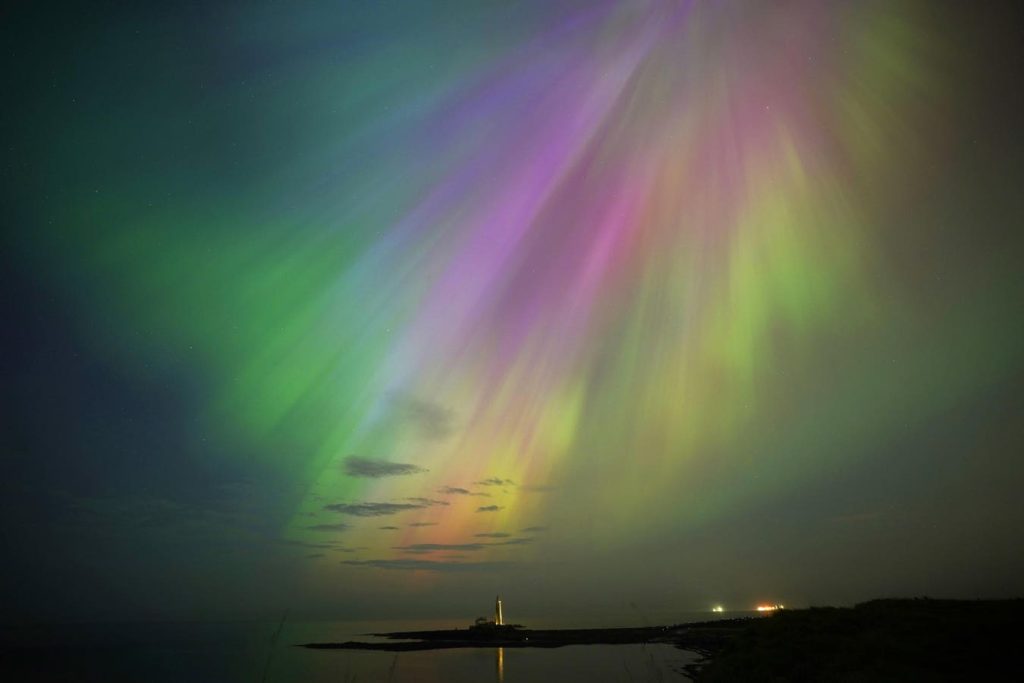Last night, the world witnessed an incredible display of the aurora borealis and aurora australis, also known as the northern and southern lights respectively. This was the result of the strongest geomagnetic storm in 21 years hitting Earth’s atmosphere, as predicted. The aurora could be seen as far south as Florida and Switzerland, with the southern lights being visible in New Zealand. These stunning natural light shows are caused by charged particles from the sun, known as the solar wind, being accelerated down the Earth’s magnetic field lines and colliding with oxygen and nitrogen molecules in the ionosphere.
The green lights in the aurora are a result of collisions with oxygen molecules, while other colors such as red and blue are produced by interactions with nitrogen molecules. These displays are not uncommon, as the aurora generally has a season with the northern lights being visible from September through March and the southern lights from March through September. However, they can occur all year round and are currently more active due to the sun reaching its “solar maximum” phase, which is the peak of magnetic activity in its 11-year solar cycle.
The exceptional display last night was caused by multiple coronal mass ejections, which occur when magnetic material is ejected into space following solar flares. These ejections all headed towards Earth and combined as they traveled, resulting in a G4 geomagnetic storm. Europe experienced high auroral activity as soon as it got dark, with sightings reported across the UK and as far south as Florida in the US. Many of the photos captured during these displays show vibrant colors and distinct shapes, while the naked eye may only see grey streaks due to light pollution in cities.
For those eager to witness more auroral displays throughout the weekend, experts recommend venturing away from light pollution. Using tools such as the Dark Sky Place finder or light pollution maps can help enthusiasts find the best viewing locations. The aurora typically forms around the North Pole in an oval shape at latitudes between 66-69° North, with top spots to observe them being Alaska, northern Canada, Iceland, Greenland, and parts of Scandinavia and northern Russia. As the displays continue, skywatchers are encouraged to seek out clear skies and unobstructed views for the best experience.


